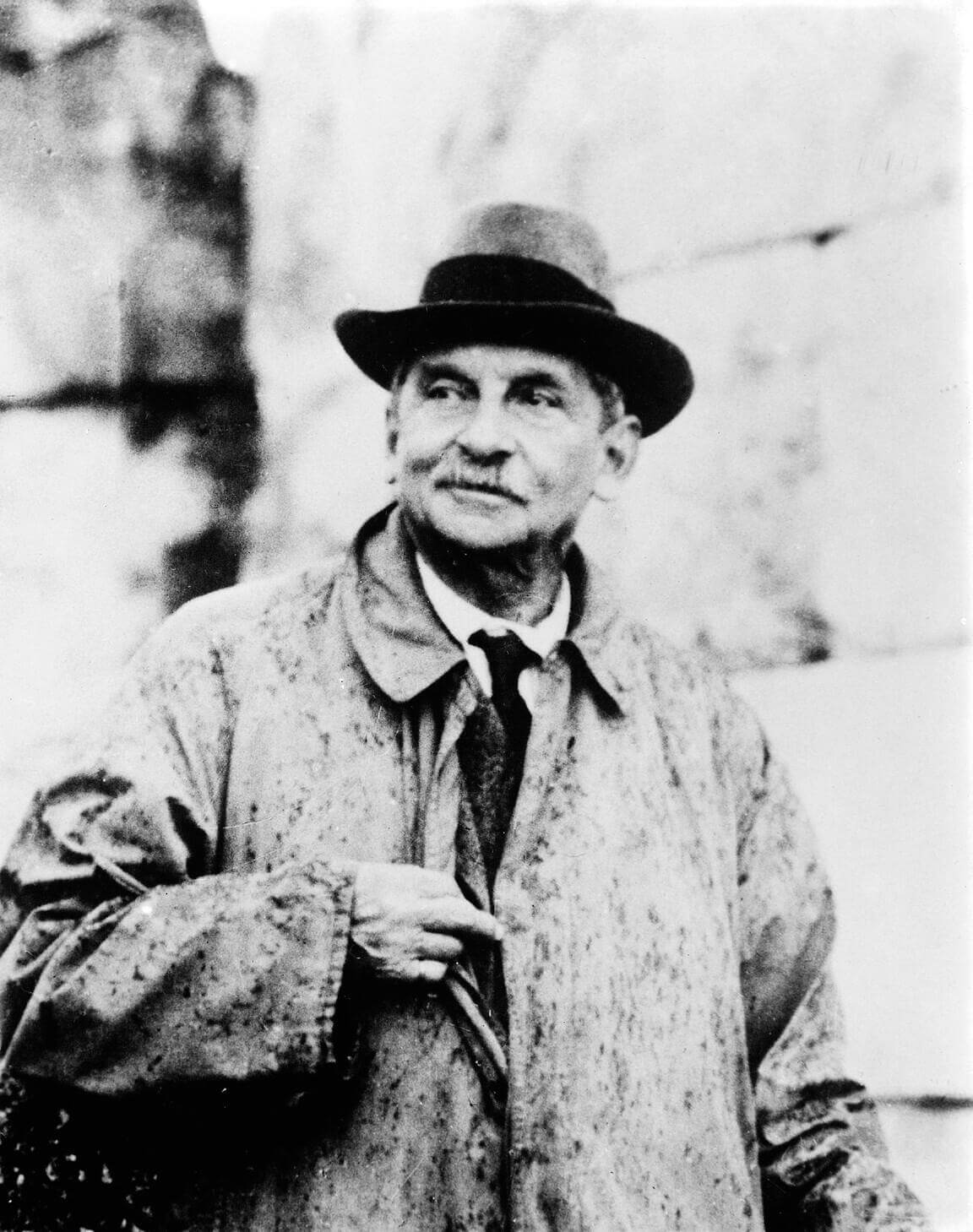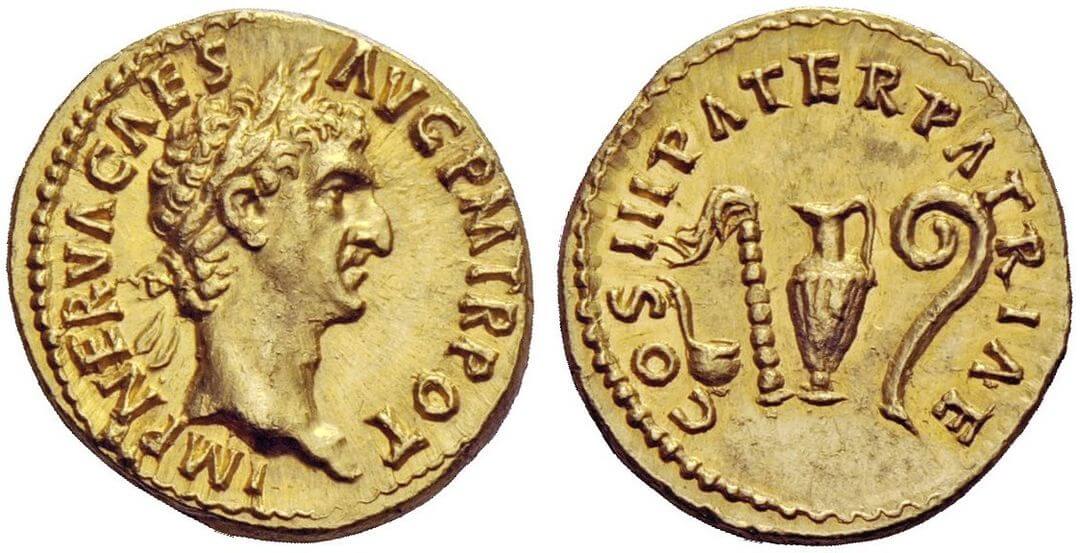Evans, Arthur John (1851-1941)
by Hadrien Rambach
When Sir John Evans died, his obituary in the Aethenaeum read that he was survived by “his distinguished son Dr. Arthur Evans, keeper of the Ashmolean Museum and first discoverer of Mycenaean remains in Crete”. Also a numismatist – President of the Royal Numismatic Society from 1914 to 1919 – Sir Arthur Evans is especially remembered as an archaeologist – Extraordinary Professor at Oxford University. Evans coined the term ‘Minoan’ in 1896, and in 1900 started to excavate the site of Knossos (Crete), discovering much about this formerly unknown civilization.
After a youthful interest in coins – making drawings when he was young as seven, he graduated and then travelled to the Balkans, where he got involved in the local politics leading to his being banished from Bosnia by the Austrians, having nevertheless paid close attention to the local archaeology there. In 1884 he was appointed Keeper of the Ashmolean Museum, where he succeeded in having it moved from Broad St. to Beaumont St., and opened the Heberden Coin Room to get the museum’s coin and medal collection returned from the Bodleian Library.
Leonard Forrer, in his preface to Naville catalogue III, noted that “The Evans collection contains many pieces originating from the collection of Sir John Evans”, though most coins were bought by Sir Arthur – notably an important group from the Arras hoard. As early as 1889 (135 lots sold £303 15s.) and 1898 (146 lots sold £1828 2s.), Evans had anonymously sold a number of Greek coins at Sotheby’s, coins that had been “collected principally in Sicily and south Italy”. Evans gave and bequeathed many of his coins to the Heberden Coin Room of the Ashmolean Museum, but an important group was sold privately to Jameson, a few coins were sold by Glendining and Cahn, with a large part of his collection sold by Naville in his auctions III-IV (June 1922), XII (October 1926) and XVII (October 1934), and by Jacob Hirsch in his auction XXX (May 1911). Naville’s third auction contained 342 lots of Roman and Byzantine gold coins. The tracing of Evans’s collection is complex: according to Alan Walker, “over his lifetime he must have owned many thousands of Greek and Roman coins, but he seems to have been constantly selling off duplicates (often to raise money for his excavations or to settle debts) and buying new and better pieces”.
Bibliography:
- Christopher Blunt, “Personal reminiscences of some distinguished numismatists of a previous generation”, in British Numismatic Journal, vol. 46 (1976), pp. 64-74, p. 71.
- Leonard Forrer, “Numismatic reminiscences of the last sixty years”, in British Numismatic Journal, vol. 73 (2003), pp. 191-196: pp. 193-194; Harrington Manville, Biographical dictionary of British and Irish numismatics, London 2009, pp. 89-90.
- John Spring, Ancient Coins Auction Catalogues 1880-1980, London 2009, pp. 176-177.
- Alan Walker, “Catalogues and their collectors”, in American Journal of Numismatics, vol. 20 (2008), pp. 597-615: pp. 600-602 and 611-613.
- Hadrien Rambach, “Provenance glossary”, in Numismatica Ars Classica, Auction 91: the George W. La Borde collection of Roman aurei – part I, Zurich, 23 May 2016, pp. [67]-[79].
- Hadrien Rambach, “Provenance glossary”, in Numismatica Ars Classica, Auction 99: the George W. La Borde collection of Roman aurei – part II, Zurich, 29 May 2017, pp. 47-63.
- Hadrien Rambach, “Provenance glossary”, in Numismatica Ars Classica, Auction 105: the George W. La Borde collection of Roman aurei – part III, Zurich, 9 May 2018, pp. 82-105.
This article was first published in a catalogue of auction house Numismatica Ars Classica.










